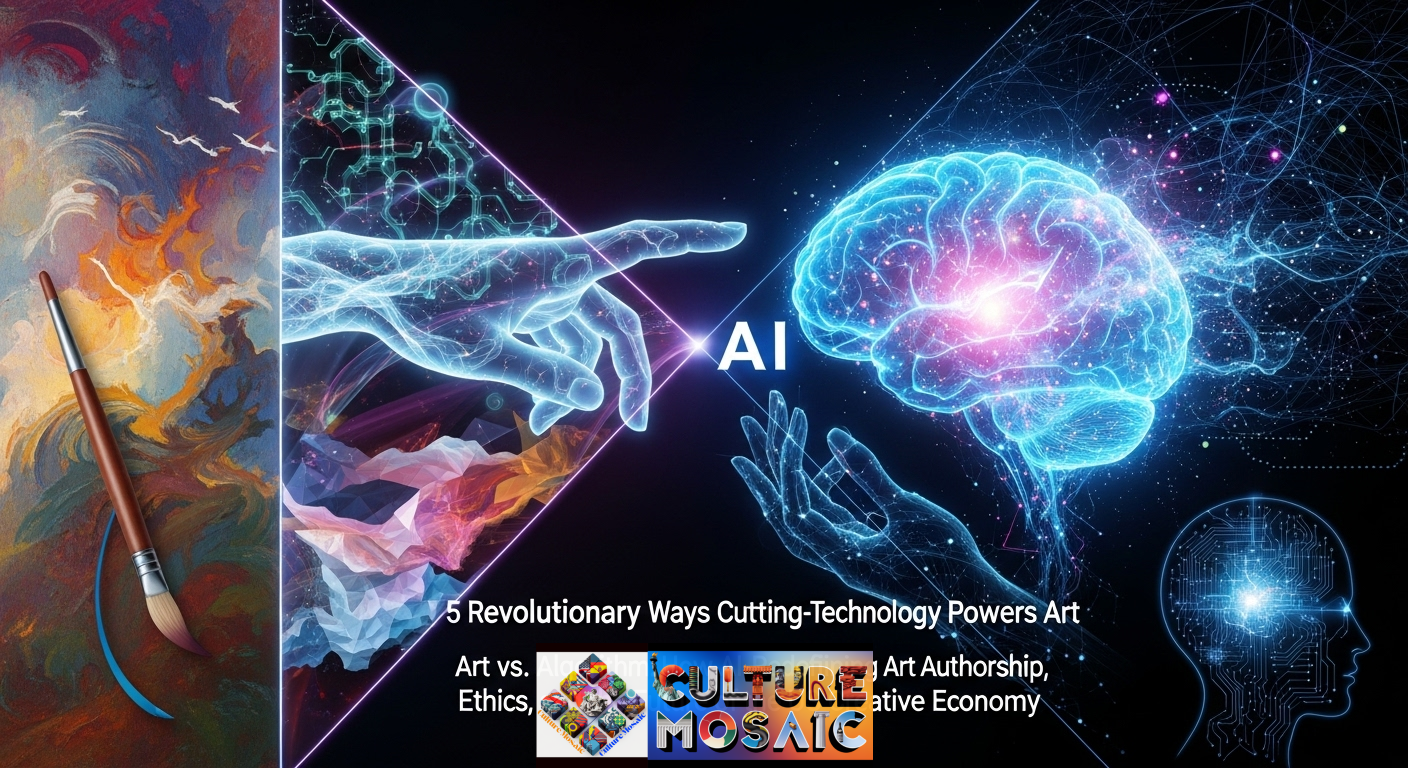Cutting-Edge Technology: The art world is experiencing a transformation that would have seemed like science fiction just a few years ago. Walk into any design studio, scroll through social media, or attend a digital art exhibition, and you’ll encounter a new kind of creator: artificial intelligence. This isn’t a distant future scenario. It’s happening right now, and it’s forcing us to rethink everything we thought we knew about creativity, ownership, and what it means to be an artist.
Cutting-edge technology has always influenced art, from the invention of the camera to Photoshop’s digital brushes. But generative AI represents something fundamentally different. Tools like DALL-E, Midjourney, and Stable Diffusion don’t just assist artists. They create images from text descriptions in seconds, producing results that range from amateur experiments to museum-worthy pieces. This capability has sparked one of the most heated debates in contemporary culture: when a machine makes art, who deserves credit, compensation, and control?
The Rise of Cutting-Edge Technology in Creative Spaces
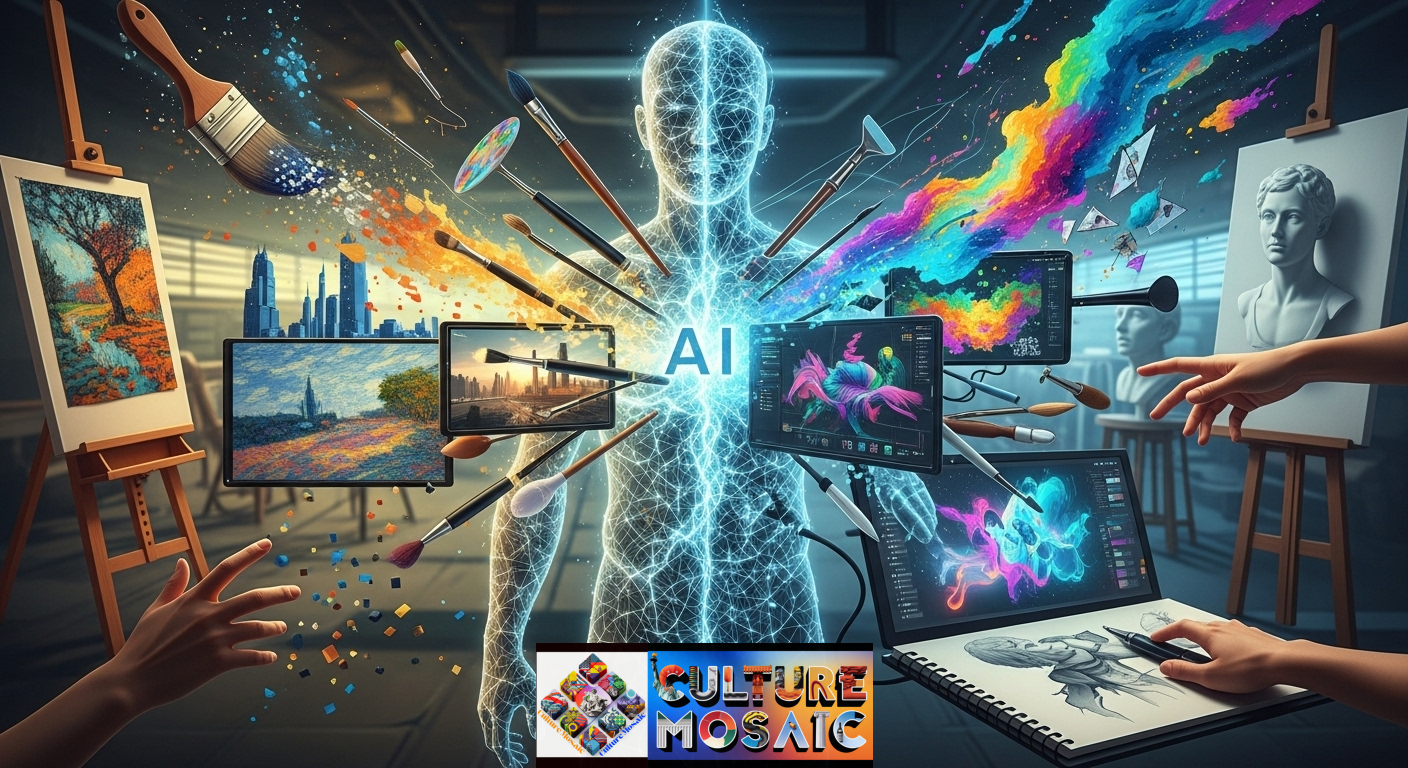
Generative AI has democratized art creation in ways that feel both exciting and unsettling. You no longer need years of training in painting, drawing, or digital illustration to produce stunning visual work. Type a detailed description into an AI art generator, and within moments, you’ll have an original image. This accessibility has opened creative expression to millions who previously felt locked out of the art world.
The technology works by analyzing millions of existing images during its training phase, learning patterns, styles, and visual relationships. When you enter a prompt like “impressionist landscape at sunset with purple mountains,” the AI doesn’t retrieve an existing image. Instead, it generates something new based on its learned understanding of impressionist techniques, landscapes, sunsets, and color theory.
This cutting-edge technology has practical applications beyond personal creative exploration. Marketing teams use AI art for rapid prototyping and concept development. Independent game developers create entire visual worlds without hiring large art departments. Authors design book covers. Small businesses generate social media content. The efficiency and cost savings are undeniable, which partly explains why adoption has been so rapid.
But this democratization comes with significant complications. Many traditional artists view AI art generators not as tools but as threats to their livelihoods and the integrity of their craft. The central issue revolves around how these systems learned to create art in the first place.
The Ethics Debate: Cutting-Edge Technology Meets Copyright Concerns
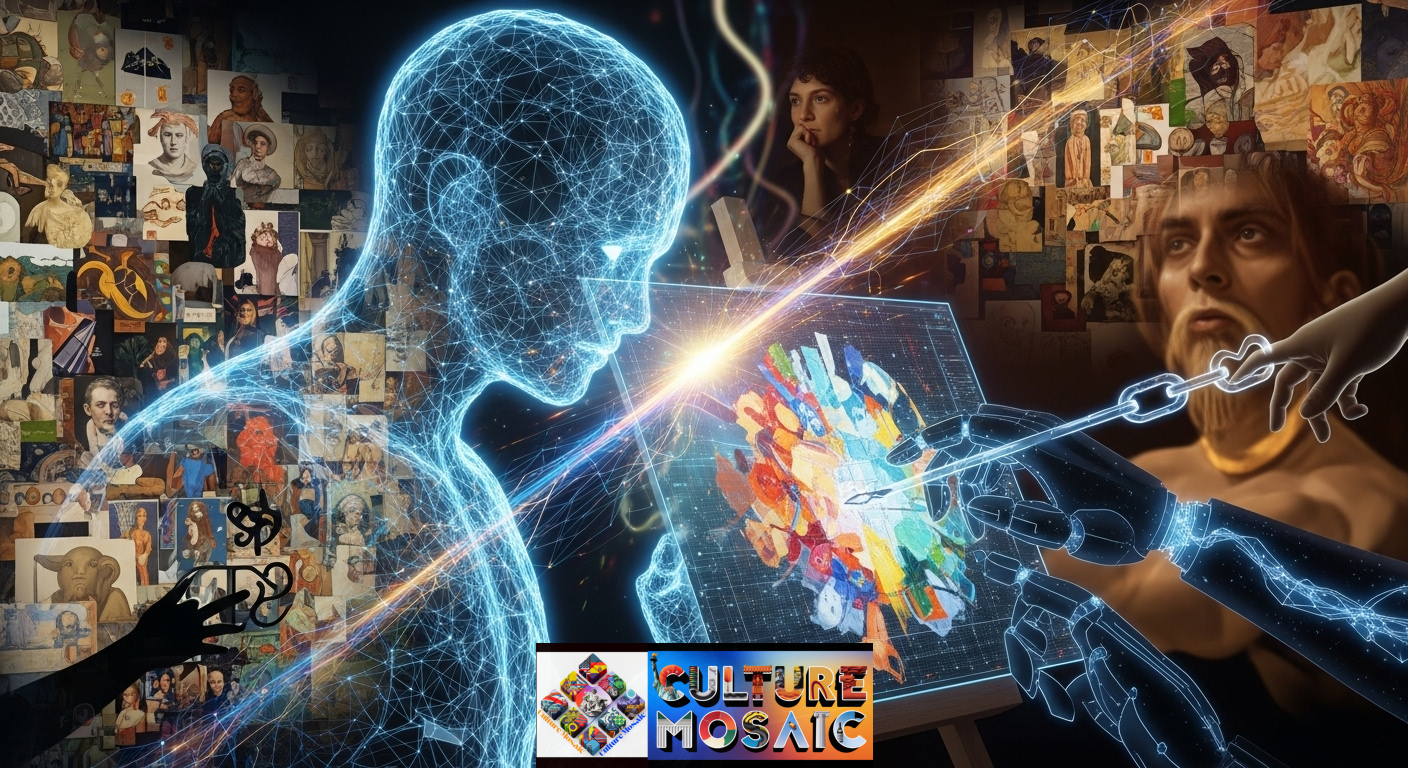
The most contentious aspect of AI-generated art centers on training data. To teach an AI system how to create images, developers fed these models billions of pictures scraped from the internet. This dataset included copyrighted work from professional artists, many of whom never consented to their art being used this way and received no compensation.
Artists discovered their distinctive styles being replicated by AI systems that had studied their portfolios. Illustrators found that typing their own names into AI generators would produce images mimicking their signature techniques. This felt less like inspiration and more like industrial-scale appropriation. Several high-profile lawsuits have emerged, with artists arguing that AI companies built profitable products on stolen intellectual property.
The companies developing this cutting-edge technology counter that machine learning constitutes transformative use, similar to how human artists study the work of others to develop their skills. They argue that AI doesn’t copy images but learns abstract concepts about visual composition, style, and technique. Courts haven’t yet settled these questions definitively, leaving the creative community in legal limbo.
Beyond copyright, there are deeper ethical concerns. If AI can generate images in seconds that would take a human artist hours or days to create, what happens to the economic foundation of creative professions? Freelance illustrators already report losing work to clients who opted for AI-generated alternatives. Stock photography sites face existential questions about their business models. The concern isn’t hypothetical or distant. It’s affecting working artists today.
Some creators have responded by explicitly prohibiting AI companies from using their work, though enforcement remains nearly impossible given how these systems operate. Others have organized protests and boycotts. A few have reluctantly begun incorporating AI into their workflows, viewing it as an inevitable evolution they must adapt to or risk obsolescence.
The Prompt Engineer: A New Kind of Artist Emerges
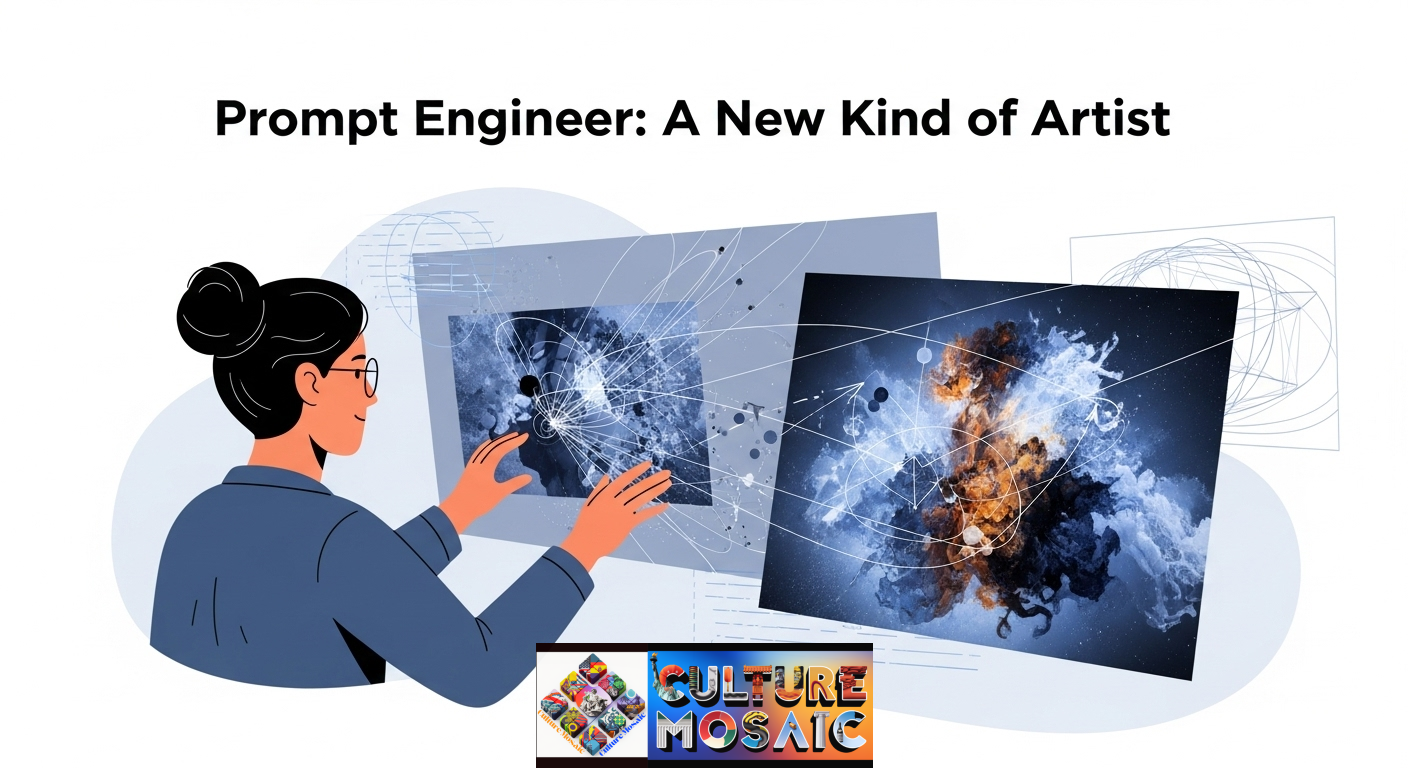
Cutting-Edge Technology: Amid the controversy, a new creative role has emerged: the prompt engineer. These individuals specialize in crafting the text descriptions that guide AI art generators toward specific results. It’s more complex than it might sound. Effective prompts require understanding how different systems interpret language, knowledge of artistic terminology, and an iterative process of refinement.
A prompt engineer might write something like: “A lonely astronaut standing on a cracked desert planet, dramatic side lighting, cinematic composition, painted in the style of Edward Hopper’s emotional isolation, rendered with photorealistic detail, 8K resolution.” Each element guides the AI toward particular aesthetic choices. Changing a single word can dramatically alter the output.
This raises a fascinating question about authorship. Is prompt engineering a legitimate form of artistic expression? Proponents argue it requires creative vision, aesthetic judgment, and technical skill. The prompt engineer conceptualizes the image, makes countless artistic decisions, and curates the final result from multiple generations. They see themselves as directors rather than technicians.
Critics counter that typing descriptions doesn’t constitute art-making in any meaningful sense. The AI does the actual creative work of translating concepts into visual form. A prompt engineer’s contribution, they argue, is more akin to commissioning art than creating it. They worry that calling prompt engineering “art” devalues the technical mastery and creative insight that traditional art requires.
The US Copyright Office has weighed in with a preliminary stance: AI-generated images cannot be copyrighted unless they contain substantial human creative input beyond the prompt itself. This suggests official recognition that pure prompt engineering may not meet the threshold for authorship. However, these policies are still evolving as the technology and its applications develop.
Cutting-Edge Technology as Collaborative Tool, Not Replacement
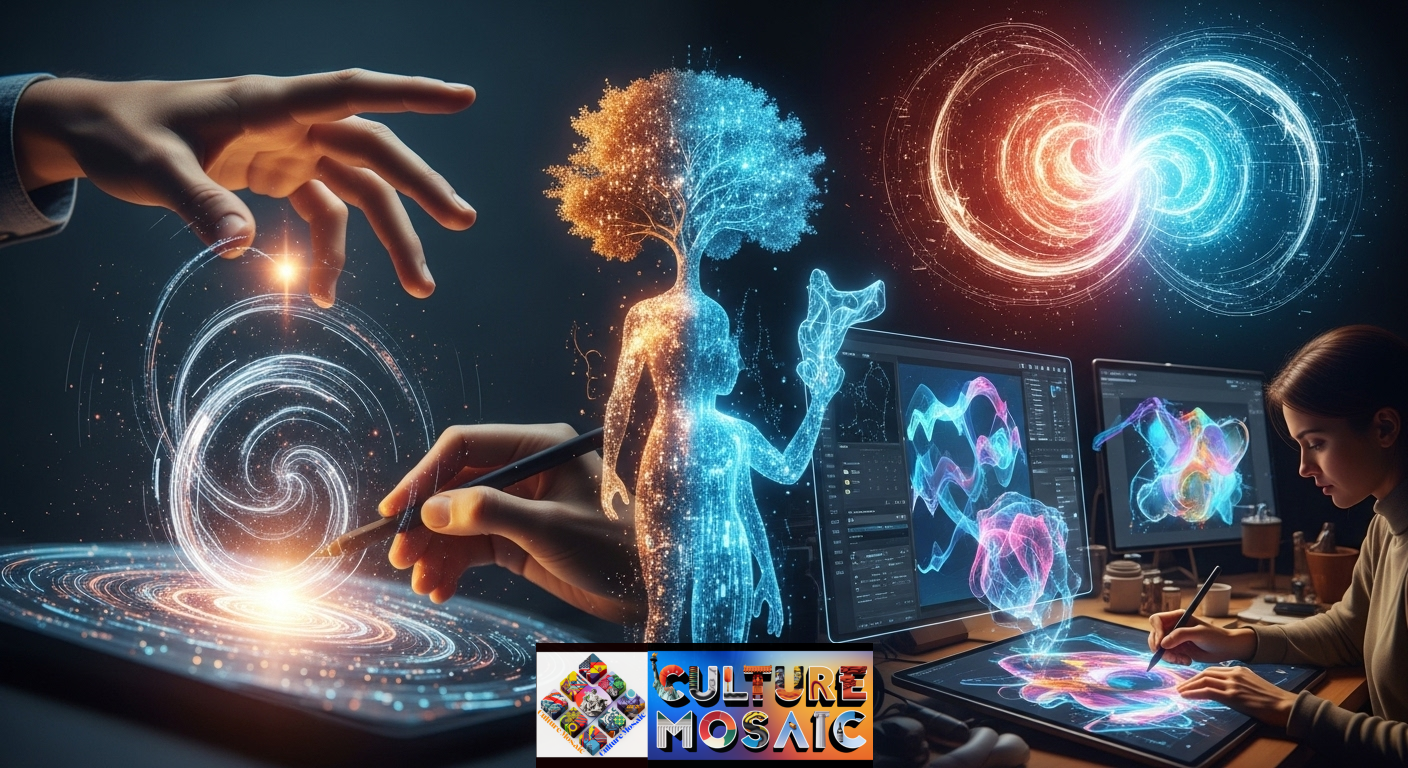
Not every artist views AI as an adversary. A growing number of creators are exploring how cutting-edge technology can augment rather than replace human creativity. They use AI as one tool among many, integrating machine-generated elements into larger artistic visions that require human judgment, curation, and refinement.
Digital artist Refik Anadol creates immersive installations by training custom AI models on specific datasets, then choreographing the resulting visualizations into experiential environments. His work at the Museum of Modern Art transformed architectural spaces into flowing, dreamlike projections. The AI generates the visual content, but Anadol’s artistic vision determines what data to use, how to present it, and what emotional response to evoke.
Some illustrators use AI for initial concept exploration, generating dozens of rough compositions quickly before selecting promising directions to develop manually. Others employ AI for time-consuming background elements while focusing their own efforts on character design and narrative details where human creativity adds the most value. This hybrid approach treats AI as a sophisticated tool rather than an autonomous creator.
Experimental artists are deliberately exploring the aesthetic possibilities unique to AI systems, including their errors and biases. They create work that couldn’t exist without machine learning, investigating what happens when algorithmic processes shape visual expression. This approach views cutting-edge technology not as a way to replicate traditional art more efficiently but as a medium with its own distinct properties worth exploring.
The collaborative model suggests a future where human creativity and artificial intelligence complement each other. AI handles technical execution and rapid iteration while humans provide conceptual depth, emotional resonance, cultural context, and curatorial judgment. This division of labor could potentially expand what’s creatively possible rather than simply replacing human artists with cheaper alternatives.
The Economic Impact on Creative Professionals
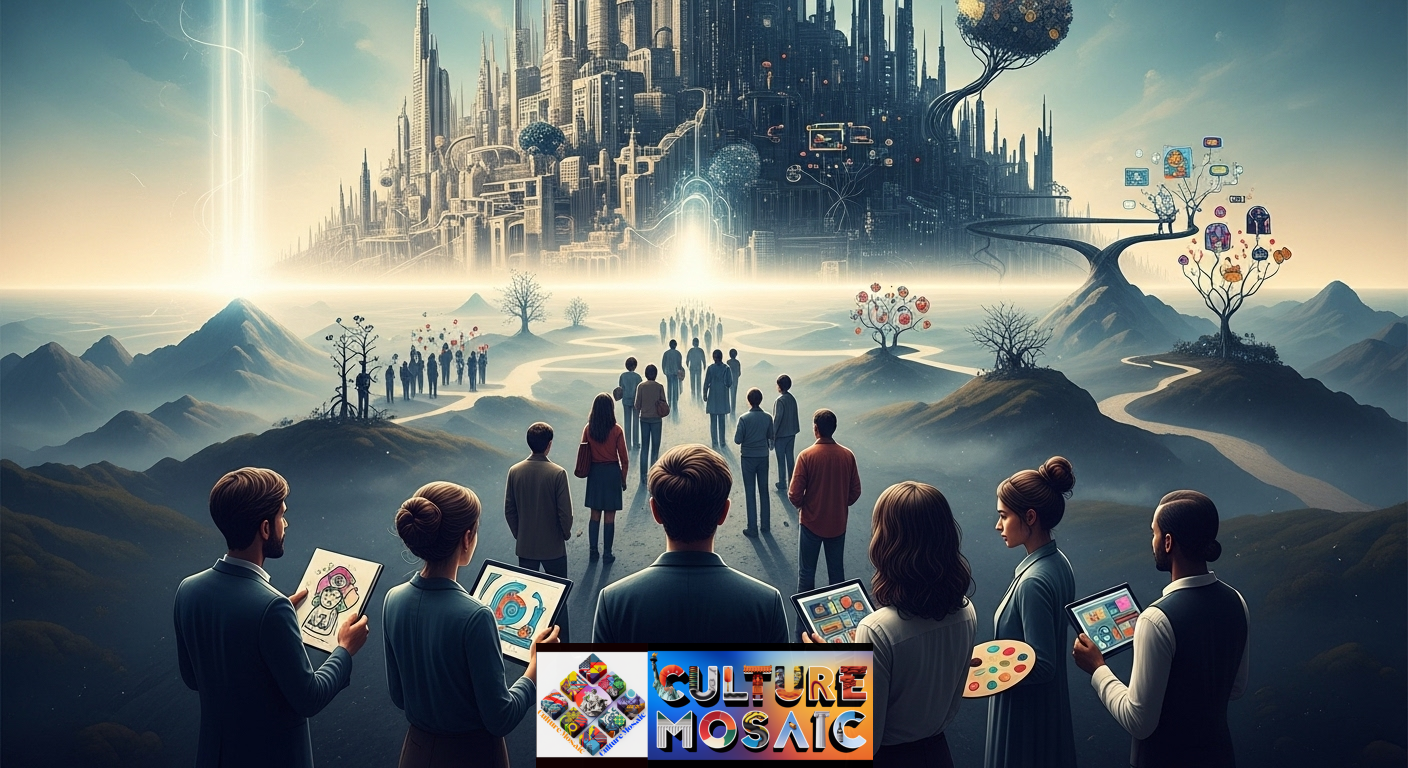
The rise of AI art isn’t just a philosophical debate. It has real economic consequences for people who earn their living through creative work. Freelance illustrators have reported significant declines in commissioned work, particularly for projects with smaller budgets. Why pay an artist several hundred dollars for custom illustrations when AI can generate acceptable results for a monthly subscription fee?
The impact varies by specialty. Highly conceptual artists whose work carries a distinctive personal vision face less immediate threat than those producing more standardized commercial art. Character designers, album cover artists, and gallery painters retain advantages that AI currently struggles to replicate. But artists who specialized in backgrounds, texture generation, or style-consistent series work find their skills devalued by cutting-edge technology that excels at exactly these tasks.
The creative economy in the United States employs millions of people and contributes hundreds of billions of dollars to GDP. If AI significantly displaces human artists without creating equivalent new opportunities, the social and economic consequences could be substantial. Art schools are already questioning what skills to teach when traditional technical mastery may matter less than understanding how to direct algorithmic tools.
However, history offers some perspective. Photography didn’t eliminate painting, though many predicted it would. Digital tools didn’t end traditional media. New technologies typically transform creative fields rather than destroying them, creating different opportunities while closing others. The transition periods are painful for those whose skills become obsolete, but creative expression persists in evolving forms.
Some optimists argue that AI could actually expand the creative economy by making visual creation accessible to more people and enabling smaller teams to undertake ambitious projects. Independent developers can now create visually sophisticated games. Authors can illustrate their own work. Marketing departments can produce more content with existing staff. Whether these efficiency gains translate into more opportunities for human creatives or simply concentrate wealth in fewer hands remains an open question.
Cutting-Edge Technology and the Question of Creative Authenticity
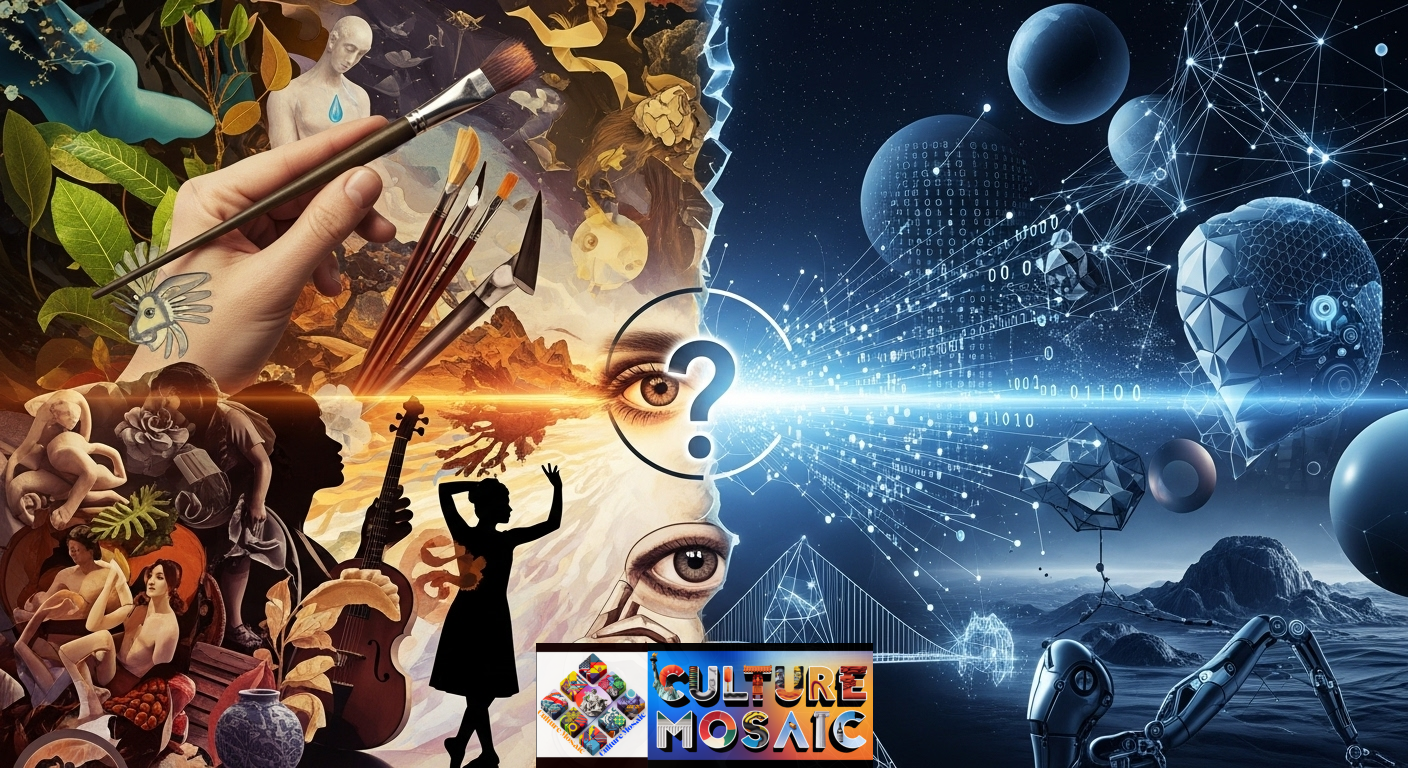
Cutting-Edge Technology: Beyond economics and copyright lies a more philosophical concern: what happens to creative authenticity when machines generate art? Human creativity springs from lived experience, emotional depth, cultural context, and individual perspective. It reflects who we are, what we’ve experienced, and how we interpret the world. Can an algorithm that has none of these qualities produce authentic art?
Some argue that authenticity requires intentionality and understanding that machines simply don’t possess. When an AI generates a melancholic landscape, it doesn’t feel melancholy. It doesn’t understand loss or longing. It recognizes visual patterns associated with those concepts but has no subjective experience. This absence of consciousness, they contend, means AI-generated images lack the essential quality that makes art meaningful.
Others counter that authenticity doesn’t reside in the creator but in the viewer’s experience. If an AI-generated image moves you, provokes thought, or communicates an idea effectively, does it matter whether a human or machine made it? They point out that we routinely appreciate art from cultures and time periods vastly different from our own, suggesting that shared experience between creator and viewer isn’t necessary for meaningful artistic communication.
The debate mirrors older arguments about mechanical reproduction that philosopher Walter Benjamin explored in the 1930s. He questioned whether photography and film could possess the “aura” of unique, handcrafted works. Nearly a century later, we accept photography as legitimate art. Perhaps AI-generated images will follow a similar trajectory, initially controversial but eventually accepted as another valid form of creative expression.
What seems clear is that cutting-edge technology is forcing us to examine assumptions about creativity we’ve taken for granted. If we define art by technical execution, AI threatens to surpass human capabilities in many domains. If we define it by conceptual depth, emotional resonance, and personal vision, human artists retain distinctive advantages. The question becomes which definition matters more and whether these categories are as distinct as we’ve assumed.
The Future Landscape: Where Cutting-Edge Technology Takes Creative Expression
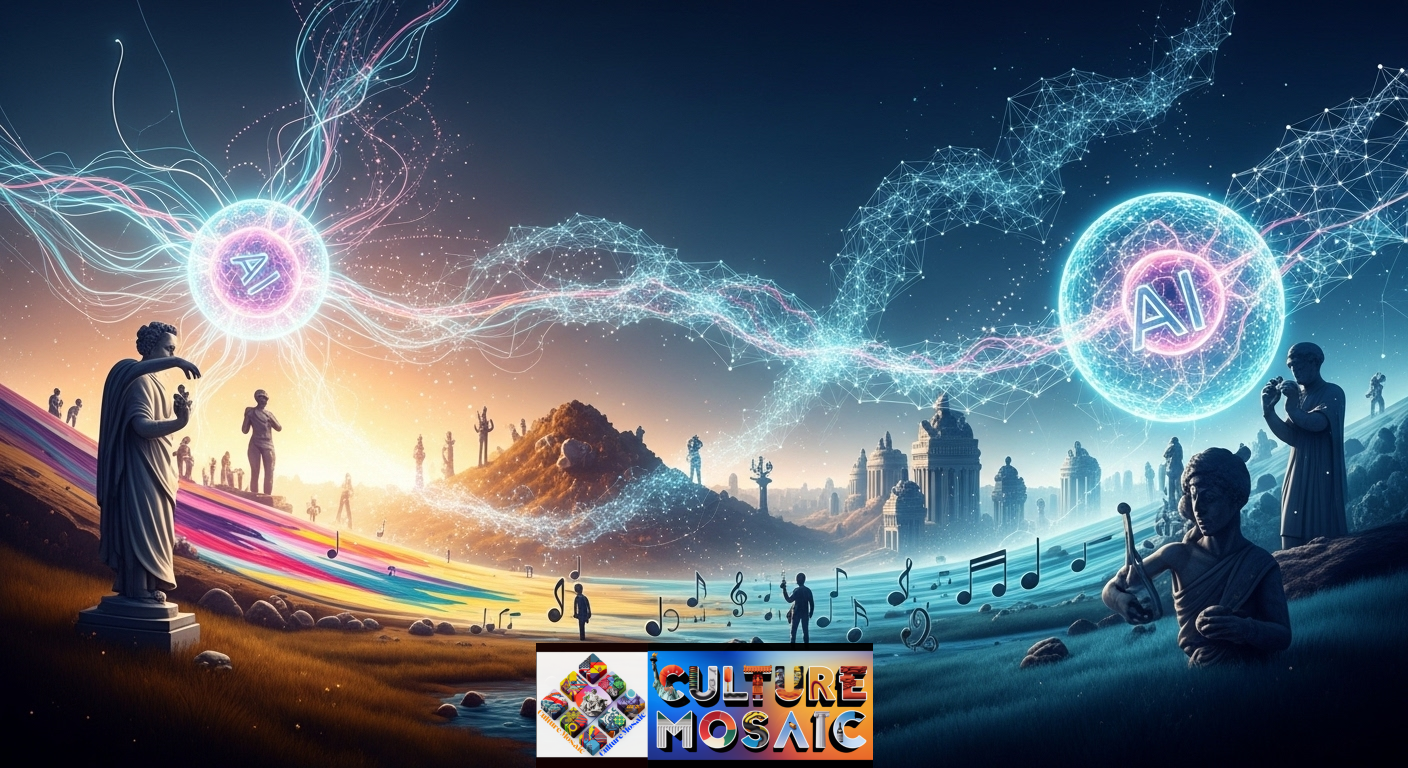
Looking ahead, the integration of AI into creative workflows seems inevitable, regardless of how current controversies resolve. The technology is too powerful, accessible, and cost-effective to disappear. The question isn’t whether AI will play a role in art creation, but what that role will be and how we structure the relationship between human creativity and artificial intelligence.
Several possible futures emerge from current trends. In one scenario, AI becomes a standard tool that most artists incorporate into their process, similar to how digital tablets and photo editing software became ubiquitous. Artists who master both traditional skills and cutting-edge technology enjoy competitive advantages, while those who resist adaptation find fewer opportunities.
Another possibility involves increased specialization, where prompt engineers and AI art directors emerge as distinct professions separate from traditional artists. Companies might employ teams that include both human artists for conceptual and narrative work and AI specialists for execution and iteration. This division of labor would reshape creative industries without necessarily eliminating human roles.
A more concerning scenario sees AI predominantly displacing human artists in commercial contexts, with creative work increasingly concentrated among a smaller number of high-profile artists whose personal brand and vision justify premium pricing. This would mirror trends in other industries where automation eliminated middle-tier jobs while leaving some high-end positions intact.
The most optimistic vision imagines AI expanding creative possibilities rather than simply replacing existing practices. Artists might collaborate with AI systems they’ve trained on their own work, creating pieces that blend human intentionality with machine capabilities in ways neither could achieve alone. This could open entirely new aesthetic territories that we can’t currently imagine.
Regulatory and Industry Responses to Cutting-Edge Technology
Governments and industry organizations are beginning to develop responses to AI art challenges. The European Union’s AI Act includes provisions addressing creative applications, focusing on transparency requirements and protecting human creators’ rights. These regulations may influence global standards even if implemented only in Europe, given the region’s market size and regulatory influence.
Professional organizations representing artists have advocated for stricter controls on training data, compensation mechanisms for artists whose work contributes to AI capabilities, and clear labeling of AI-generated content. Some propose licensing systems similar to music rights, where AI companies pay into pools that compensate artists based on style usage.
Technology companies have responded with varying approaches. Some platforms now offer opt-out mechanisms allowing artists to exclude their work from future training datasets, though these don’t address already-trained systems. Others have begun developing systems trained exclusively on licensed content, addressing copyright concerns but potentially limiting creative range.
Major stock image companies are establishing guidelines distinguishing AI-generated content from human-created photography and illustration, often requiring disclosure and sometimes paying different rates. These industry standards are emerging organically as companies navigate uncertain legal terrain and respond to creator community concerns.
The cutting-edge technology sector itself isn’t monolithic. Smaller open-source projects take different approaches than commercial platforms. Some prioritize unrestricted creative freedom while others emphasize ethical considerations and artist rights. This diversity might ultimately prove beneficial, allowing different models to coexist and serve different needs rather than imposing a single solution on varied use cases.
Finding Balance Between Innovation and Protection
The challenge facing the creative community involves balancing legitimate concerns about artist rights and livelihoods against the potential benefits of cutting-edge technology. This isn’t a binary choice between embracing AI Cutting-edge technology unreservedly or rejecting it entirely. Most workable solutions likely lie in nuanced middle positions that protect human creators while allowing technological innovation.
Stronger attribution systems could ensure that when AI generates work influenced by particular artists’ styles, those artists receive credit and potentially compensation. Technical solutions might track which training data influenced specific outputs, creating transparency about an AI image’s creative lineage.
Expanded fair use frameworks might distinguish between AI companies profiting from systems trained on artists’ work and individual users creating non-commercial content. Just as copyright treats commercial use differently from personal use in other contexts, AI art policies could make similar distinctions.
Education systems could adapt to prepare emerging artists for a landscape where cutting-edge technology plays a significant role. Rather than treating AI as either a threat or a savior, art education might teach both traditional skills and technological literacy, emphasizing creative vision and conceptual thinking that transcend specific tools or techniques.
The creative community itself has agency in shaping these outcomes. Artists who engage thoughtfully with AI technology, establish professional standards, and advocate for their interests can influence how this transition unfolds. Those who dismiss all AI art as illegitimate or refuse to engage with the technology may find themselves excluded from conversations that determine creative work’s future structure.
The Philosophical Heart of the Debate
Cutting-Edge Technology: Ultimately, the controversy surrounding AI art reflects deeper questions about human creativity and what we value in artistic expression. Is art primarily about the final product or the process of creation? Do we appreciate artwork because it demonstrates technical mastery, because it communicates ideas and emotions, or because it connects us to another human consciousness?
These questions don’t have simple answers, and different people legitimately value different aspects of creative expression. Someone who appreciates art primarily for aesthetic pleasure might not care whether a human or AI created a beautiful image. Someone who values art as communication between human consciousnesses might find AI-generated work fundamentally empty regardless of its visual appeal.
The rise of cutting-edge technology in creative fields forces us to articulate what we actually care about when we engage with art. This process of examination and definition might ultimately prove valuable even if it feels uncomfortable. Understanding why we value certain forms of expression helps us make better decisions about what to protect and what to allow to evolve.
Human creativity likely possesses qualities that artificial intelligence won’t soon replicate. Our capacity for meaningful suffering and joy, our cultural contexts, our ability to make intentional choices based on values and emotions—these shape creative work in ways that pure pattern recognition cannot duplicate. But AI might develop its own forms of creative expression that we can’t currently imagine, just as photography created aesthetic possibilities that didn’t exist in painting.
The next decade will reveal how this tension resolves. Will we look back at this moment as the beginning of creativity’s golden age, where humans and machines collaborated to expand artistic possibilities? Or will we see it as the point where cutting-edge technology began displacing human creative expression, concentrating power in fewer hands while reducing opportunities for working artists? The answer depends partly on technological development but equally on the choices we make about regulation, industry practices, and what we decide to value and protect.
Frequently Asked Questions About Cutting-Edge Technology
1. Is AI-generated art legal to use commercially?
The legality of using AI art commercially remains unsettled. Current guidance suggests that purely AI-generated images may not qualify for copyright protection, meaning you can’t prevent others from using identical outputs. However, if you substantially modify AI-generated work with human creative input, you might secure copyright for the combined result. Cutting-edge technology
The more pressing legal question involves the training data used to create AI systems, with ongoing lawsuits challenging whether AI companies violated copyright by training on artists’ work without permission. Until courts definitively resolve these cases, commercial AI art use carries some legal uncertainty, particularly if the work closely resembles identifiable artists’ styles.
2. Will AI replace human artists completely?
Complete replacement seems unlikely, though AI will certainly transform creative professions. History suggests that new technologies change what artists do rather than eliminating art itself. Photography didn’t end painting, and digital tools didn’t eliminate traditional media. Human creativity offers distinctive value that AI currently struggles to replicate, including emotional depth, cultural context, intentional meaning, and the ability to innovate beyond existing patterns. However, certain types of creative work, particularly standardized commercial art and production tasks, face significant displacement. Artists who combine traditional skills with technological literacy, emphasize personal vision over technical execution, and adapt to changing markets will likely find continued opportunities even as the industry structure evolves.
3. Who owns the copyright to AI-generated images?
Copyright ownership for AI art remains legally ambiguous. The US Copyright Office has indicated that AI-generated content without substantial human creative input cannot be copyrighted, meaning these images enter the public domain immediately. This creates a paradox where Cutting-edge technology AI art companies can’t copyright the outputs their systems create.
If you significantly modify AI-generated work through human creative decisions, selection, arrangement, and editing, you might copyright the resulting derivative work. Some AI platforms’ terms of service grant users rights to generated images, but this covers usage rights rather than copyright in the traditional sense. As legislation and case law develop, expect clearer guidelines about ownership, but for now, assume that purely AI-generated images lack copyright protection.
4. How can traditional artists compete with AI art generators?
Artists can compete by emphasizing what they offer that AI cannot: personal vision, conceptual depth, cultural authenticity, and the ability to collaborate directly with clients. Focus on work that requires understanding context, interpreting ambiguous requirements, and making nuanced creative decisions. Building a distinctive personal style and brand creates value beyond technical execution. Many artists are successfully positioning themselves as experts who incorporate AI tools within a larger creative process rather than competing with AI on pure execution speed.
Diversifying skills, maintaining strong client relationships, and communicating your unique value help sustain creative careers. Some artists also specialize in explicitly human-created work, marketing this as a premium alternative to AI-generated content for clients who value human authorship.
5. What ethical concerns should I consider when using AI art tools?
Primary ethical concerns include the origin of training data, impact on working artists, transparency about AI use, and environmental costs. Most major AI art systems are trained on copyrighted work without artists’ consent or compensation, raising questions about whether using these tools supports problematic practices. Consider whether your use displaces work that would otherwise employ human creators. Transparency matters too—representing AI-generated work as your own human creation is generally considered deceptive, particularly in commercial contexts.
Cutting-edge technology Some AI systems consume significant computing resources with substantial environmental impacts. Ethical use might involve choosing platforms that license training data appropriately, being transparent about AI involvement, using AI to augment rather than replace human creativity, and supporting policy changes that protect artist rights while enabling technological innovation.

